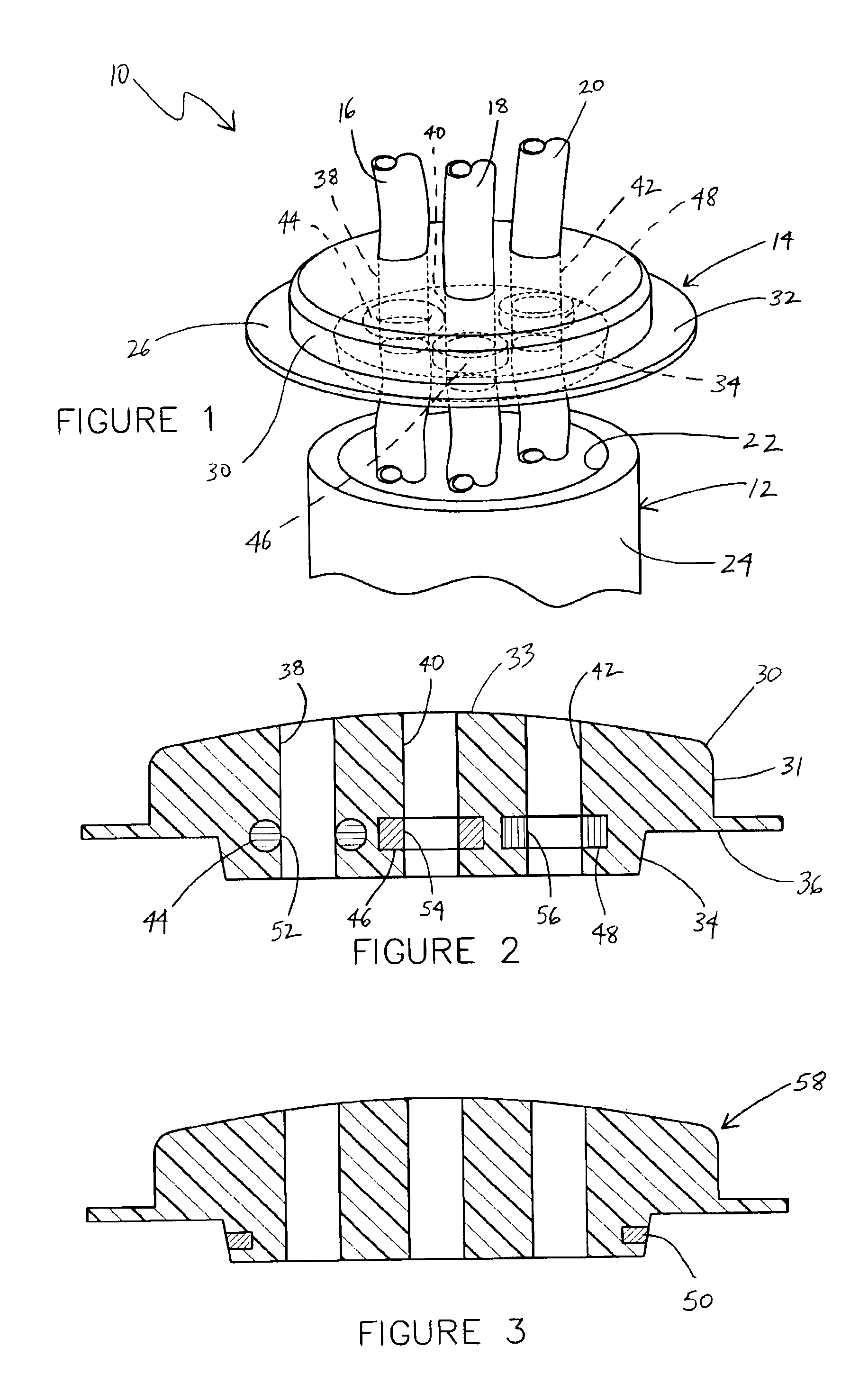Apparatus for distinguishing between tubing assemblies
- Summary
- Abstract
- Description
- Claims
- Application Information
AI Technical Summary
Problems solved by technology
Method used
Image
Examples
Embodiment Construction
[0021]Referring to FIG. 1, a tubing system 10 is shown according to a preferred embodiment. Tubing system 10 includes a vessel 12, a stopper 14, and tubes 16, 18, and 20.
[0022]Vessel 12 may be any one of a variety of different containers, beakers, bottles, canisters, flasks, receptacles, tanks, vats, vials, etc. that are generally used to hold or contain substances or articles. Vessel 12 may be made from a number of different materials (such as a polymer, glass, wood, ceramic, etc.) and may take one of a plurality of different shapes and sizes. According to a preferred embodiment, vessel 12 is of a type used in the pharmaceutical industry and has an open first end 22, side wall(s) 24, and a closed bottom end (not shown). Open first end 22 is configured to receive stopper 14, which may be used to help retain or control the substance or matter within vessel 12.
[0023]Tubes 16, 18, and 20 are each silicone tubes that are used extensively in medical, pharmaceutical, chemical, and other a...
PUM
 Login to view more
Login to view more Abstract
Description
Claims
Application Information
 Login to view more
Login to view more - R&D Engineer
- R&D Manager
- IP Professional
- Industry Leading Data Capabilities
- Powerful AI technology
- Patent DNA Extraction
Browse by: Latest US Patents, China's latest patents, Technical Efficacy Thesaurus, Application Domain, Technology Topic.
© 2024 PatSnap. All rights reserved.Legal|Privacy policy|Modern Slavery Act Transparency Statement|Sitemap



